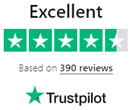As we head into the new year, it’s natural to reflect on our financial situation and think about goals for improving our money habits in 2024. For many Americans, credit card debt is an ongoing weight on their wallets that keeps them from feeling financially secure. If this hits close to home for you as 2023 wraps up, taking steps to consolidate your credit card balances could be just what you need to get a fresh start.
Developing a solid plan is imperative to achieving credit card debt consolidation successfully. In this guide, we’ll explore key factors to consider as you work to combine multiple credit card bills into one lower monthly payment through a debt consolidation loan or balance transfer credit card.
Understanding Your Current Situation
To achieve successful credit card debt consolidation by 2024, one of the first steps is to understand your current financial situation thoroughly. This includes assessing all your debts, understanding the associated interest rates, and carefully examining your monthly payments.
It’s essential to have a full understanding of your finances to begin crafting a solid plan for debt consolidation. It can be overwhelming to face all your debts head-on, but knowing where you stand financially is the first step toward a brighter financial future.
With a clear understanding of your current financial situation, you can begin moving toward achieving your credit card debt consolidation goal.
Setting Clear Financial Goals
Dealing with multiple credit card debts can be overwhelming and stressful, especially when their payment deadlines come knocking all at once. However, creating a solid credit card debt consolidation plan allows you to streamline your payment process, get lower interest rates, and achieve financial freedom.
The first step in creating such a plan is to set clear financial goals. What do you want to achieve with your credit card debt consolidation? Whether you want lower monthly payments, an easier payment process, or faster debt payoff, specifying your goals will help guide you in the right direction.
Once you’ve established a clear set of goals, you can begin to explore various consolidation options like personal loans, balance transfers, or debt management programs. With consistent effort and following through with your goals, achieving credit card debt consolidation in 2024 can be a tangible reality.
Exploring Debt Consolidation Options
Balance transfer credit cards
One of the most popular credit card debt consolidation methods is balance transfer credit cards. These credit cards offer a 0% APR promotional rate for a limited time, usually from 12 to 24 months. By transferring your high-interest credit card balances to a balance transfer card, you can save money on interest payments and pay down your debt faster.
However, it’s important to note that balance transfer cards usually charge a fee for the transfer, and the promotional rate expires after the introductory period, which could leave you with a higher interest rate.
Debt consolidation loans
Another option for credit card debt consolidation is a debt consolidation loan. This type of loan combines multiple debts into one monthly payment with a fixed interest rate. Debt consolidation loans are typically offered by banks, credit unions, and online lenders. With a debt consolidation loan, you can repay your credit card debt with a lower interest rate and a defined repayment schedule.
However, be aware that some lenders require collateral, such as a house or a car, which can be a risky option if you default on the loan. Additionally, a debt consolidation loan may have origination fees and prepayment penalties.
Home equity loans
You may be eligible for a home equity loan to consolidate your credit card debt if you own a home with equity. A home equity loan is a secured loan, meaning your home serves as collateral. With a home equity loan, you can borrow a lump sum of money and use it to pay off your high-interest credit card debt.
However, just like debt consolidation loans, home equity loans come with risks based on putting your home on the line. Home equity loans also have closing costs and origination fees, which can be costly, so it’s important to read all terms carefully.
401(k) loans
If you have a 401(k) account, you may be eligible to take out a 401(k) loan to consolidate your credit card debt. This type of loan allows you to borrow from your retirement account, which will be repaid with interest back to yourself over a defined term. A 401(k) loan can be a good option because it’s usually easy to qualify for and has a low-interest rate.
However, be cautious with a 401(k) loan, as taking money from your future retirement may not be advisable. Additionally, if you leave your job, the amount borrowed may have to be paid in full immediately, causing stress on your finances.
Peer-to-peer lending
Another option for credit card debt consolidation is peer-to-peer lending. This type of lending allows you to borrow money from individuals or investors online through a peer-to-peer lending platform. Peer-to-peer loans often offer competitive interest rates and flexible loan terms.
With peer-to-peer lending, as an unsecured loan, there’s often no collateral requirement. However, borrowers with FICO scores below 640 will have difficulty getting approved for a peer-to-peer loan. Also, if you are unable to make payments to the peer-to-peer loan, your credit score can suffer.
Bottom Line
In conclusion, credit card debt consolidation may seem like a daunting task, but with the right plan and steps in place, it is achievable by 2024. Remember to start by assessing your financial situation and setting realistic goals for paying off your debt. Take advantage of available resources such as credit counseling services and budgeting tools to help you stay on track.
Understand the various consolidation options, whether through a balance transfer or a personal loan and choose the option that best suits your needs. Don’t be afraid to negotiate with creditors, and make sure to read all the fine print before making any decisions. And most importantly, stay dedicated and disciplined in following through with your plan.




